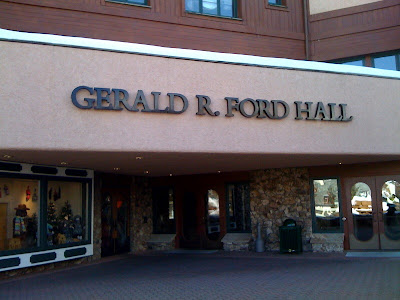South Carolina Supreme Court on Expert Witnesses and Punitive Damages
The South Carolina Supreme Court recently weighed in again on two issues near and dear to the hearts of those who have an active products liability practice: (1) the admissibility of expert witness testimony and (2) punitive damages. In Austin v. Stokes-Craven Holding Corp., — S.E.2d —-, No. 26784, 2010 WL 760410, (S.C. March 8, 2010), the Supreme Court considered the admissibility of two experts offered by the Plaintiff and whether the punitive damages awarded to that Plaintiff were excessive. In Austin, the Plaintiff filed suit against Stokes-Craven Holding Corporation, d/b/a Stokes Craven Ford, an automobile dealership, after he experienced problems with a vehicle that he purchased used from the dealership. As it turned out, the vehicle had sustained extensive damage in an accident prior to the sale of the vehicle to the Plaintiff, requiring repairs to the tune of over $20,000. Problems ensued even following repairs when the vehicle developed an oil leak, finally prompting the first owner to trade in the vehicle.
When the Plaintiff went to purchase the vehicle, he asked a series of questions related to the extent of the warranty, whether the vehicle had been wrecked, and questions regarding the previous owner. In response, the Plaintiff was informed that the warranty was a “5-year, 100,000 miles powertrain warranty,” that the truck had not been wrecked, and that the previous owner may have been someone with whom the Plaintiff was familiar and considered to be very responsible with regard to vehicle maintenance. A couple of months after purchase, the Plaintiff discovered an oil leak, which he then sought to have repaired. It was then that the Plaintiff was told by the Defendant that the vehicle was not covered by a 5-year, 100,000 mile power train warranty. The Plaintiff further discovered that the vehicle had a 5-year, 100,000 mile warranty limited to the engine, that the truck had been registered to a person different from the person whom the Plaintiff believed first owned the vehicle, and that the vehicle had sustained extensive damage prior to Plaintiff’s purchase. The dealership further provided the Plaintiff with a “Buyer’s Guide” document purportedly containing the Plaintiff’s signature that confirmed that the warranty was only up to 100,000 miles on the diesel engine. The Plaintiff adamantly denied that he signed or ever received the document. After the Plaintiff’s repeated requests to receive a return of the purchase price in exchange for the vehicle were rejected, he filed suit under multiple causes of action.
At the conclusion of trial, the Plaintiff was awarded actual and punitive damages on his causes of action for negligence, fraud, constructive fraud, and violation of the Dealer’s Act, with actual damages being awarded in the amount of $26,371.10 on each cause of action and punitive damages in the amount of $216,600 as to the Plaintiff’s cause of action for fraud. Among the multiple issues on appeal were the admissibility of experts and excessiveness of punitive damages.
The Defendant argued that the trial judge erred in qualifying two of the Plaintiff’s witnesses as experts in the areas of auto-body repair and in appraisal and valuation of Plaintiff’s truck, respectively. As was not unexpected, in both instances, the South Carolina Supreme Court found that the Defendant was not prejudiced by the admission of the expert’s testimony. Key to the Court’s ruling appeared to be its conclusion that the Defendant was able to extensively cross-examine the experts on their qualifications and their ultimate conclusions.
On the issue of punitive damages, the Court applied the guideposts set forth in the recent decision in Mitchell v. Fortis Ins. Co., 385 S.C. 570, 686 S.E.2d 176 (2009), to be applied in conducting a post-judgment review of punitive damages awards, those being: (1) the degree of reprehensibility of defendant’s misconduct; (2) the disparity between the actual and potential harm suffered by the plaintiff and amount of the award; and (3) the difference between the punitive damages awarded and civil penalties authorized or imposed on comparable cases.
As to reprehensibility, multiple additional factors are considered, including whether (1) the harm is physical versus economic; (2) the conduct evinced an indifference to or a reckless disregard for the health or safety of others; (3) the target of the conduct had financial vulnerability; (4) the conduct involved repeated actions or was an isolated incident; and (5) the harm was the result of intentional malice, trickery, or deceit, rather than mere accident. Here, the Court found that, even though the harm was economic, that fact did not minimize the reprehensibility of the dealership’s conduct. The dealership’s employees failed to disclose that the truck had been wrecked and did not have a power train warranty and potentially forged the Plaintiff’s signature to a document in an effort to legitimize the lack of the power train warranty. The Court found that those acts evinced an indifference to or a reckless disregard the health and safety of the Plaintiff and the general public that would share the road with the potentially unsafe vehicle, that the Plaintiff was financially vulnerable, and that the incidence was not isolated in that the dealership’s employee testified that he had never shown a title to a customer.
Turning to the ratio, the Court admitted that an 8.21 ratio was high, particularly given the type of injury. However, the Court noted that it was a single-digit ratio; there was evidence of the Defendant’s ability to pay; that given the extent of wreck damage and resultant safety issues, there was potential for the Plaintiff and his passengers to be subjected to serious injury; and the amount of the award would serve as a deterrent to future misconduct.
Finally, the Court endeavored to review factually-similar cases to assess the reasonability of the award. In doing so, it cited cases from Missouri and Oregon in which plaintiffs had purchased used vehicles that had a past and in which significant punitive damage awards had been affirmed. Accordingly, in light of the above, the Court affirmed the punitive damages award rendered by the jury. Whereas Justice Pleicones dissented in part from the majority opinion, he nonetheless found that punitive damages were warranted, although he would have reduced such damages to $100,000.

















